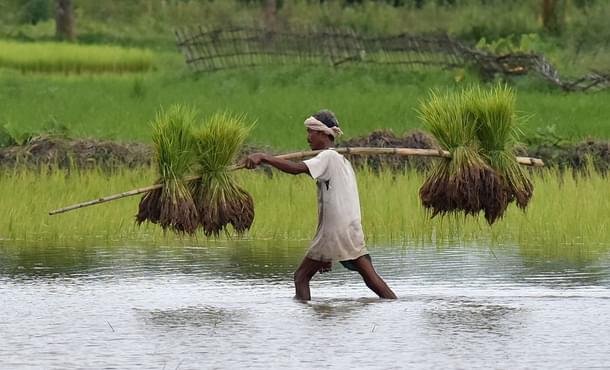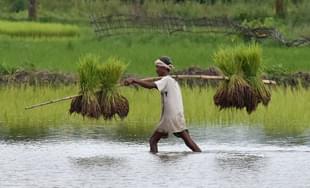Politics
PM Modi’s Crop Insurance Scheme Does Better Than Previous Schemes, But Challenges Remain
Swarajya Staff
Dec 19, 2016, 05:12 PM | Updated 05:12 PM IST
Save & read from anywhere!
Bookmark stories for easy access on any device or the Swarajya app.


Pradhan Mantri Fasal Bima Yojana (PMFBY), launched in January this year and featured prominently in the 2016 Union Budget, is perhaps Narendra Modi government’s biggest scheme in agriculture to date. In terms of impact, it has the potential to be what Kisan Credit Card (KCC) was to former Prime Minister Atal Bihari Vajpayee.
The scheme was put to test for the first time in the recently concluded Kharif season. So, this is an ideal time to review the scheme’s performance. We already have some benchmarks in place. The scheme can be weighed against previous crop insurance initiatives like the National Agriculture Insurance Scheme (NAIS) and Modified NAIS (MNAIS). These two schemes were subsumed by the new one.
Ashok Gulati, Infosys Chair Professor for Agriculture, and Siraj Hussain, former secretary at the department of agriculture and farmers’ welfare, have detailed in the Indian Express today (19 December) the successes and failures of PMFBY and made a comparison with the earlier scheme.
Consider the figures they have put out: PMFBY insured 3.5 crore farmers this year while the total in the 2013 Kharif season was 1.21 crore. The figure was 2.54 crore last year under NAIS and MNAIS combined. The duo quotes a Press Information Bureau report which says the number of non-loanee farmers increased by more than six times.
The area insured also increased from 16.5 million hectares (mha) in Kharif 2013 and 2.72 mha in Kharif 2015 to 37.5 mha under PMFBY this year. The sum insured went up from Rs 34,749 crore in Kharif 2013 to Rs 60,773 crore in Kharif 2015, and now to Rs 1,08,055 crore under PMFBY.
But there are implementation glitches, say Gulati and Hussain. They point out that the actuarial premium, which should have lowered given the massive jump in adoption, has actually gone up from 9.8 per cent in Kharif 2015 to 14.9 per cent in Kharif 2016.
The duo also writes that the scheme didn’t do well in quickly assessing crop damages in places where farmers lost their crops. Under the scheme, it was envisioned that the use of latest technology would be leveraged. But this was not done. Drones, smart phones and so on were not employed.
This is the Modi government’s biggest initiative for farmers. It cannot afford to squander it with poor implementation. Still, this was just an early stage. Many farmers didn’t have thorough knowledge of the scheme and its benefits. In the next couple of years, the scheme should improve, and the government would do well to learn from its mistakes and fix the last-mile problems in the next season.





